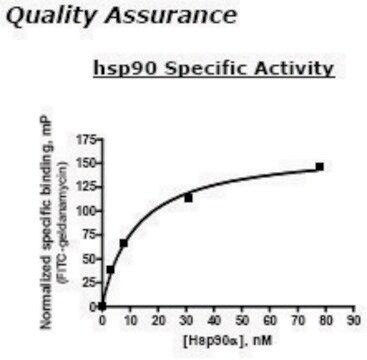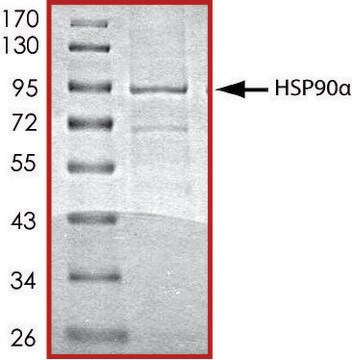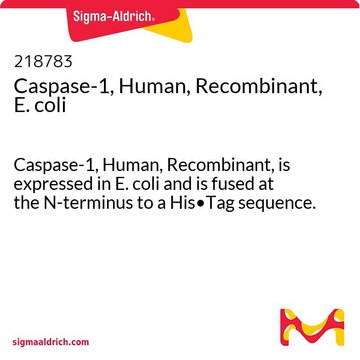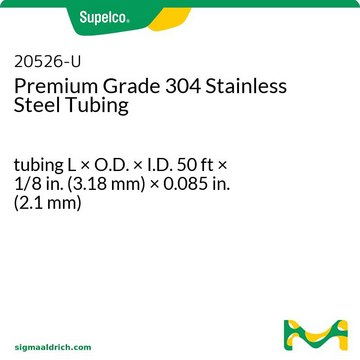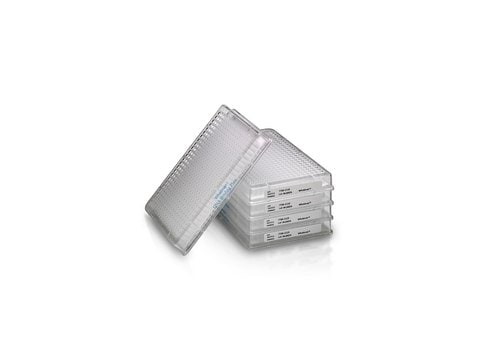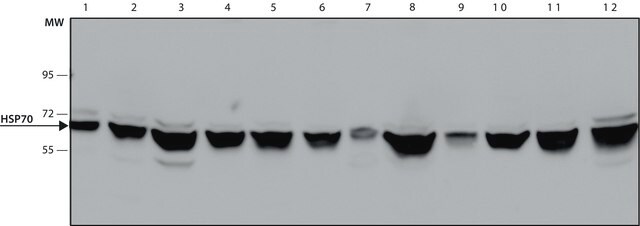385898
Hsp90, ludzki
Hsp90, Human, is a ~90 kDa heat shock protein that is constitutively expressed and resides in the cytoplasm. It exists as a dimer and binds to several other cellular proteins.
Synonim(y):
Przyzwoitka Hsp90
Zaloguj sięWyświetlanie cen organizacyjnych i kontraktowych
Wybierz wielkość
Wybierz wielkość
Zmień widok
About This Item
Kod UNSPSC:
12352202
NACRES:
NA.77
Polecane produkty
Poziom jakości
Próba
≥90% (SDS-PAGE)
Formularz
liquid
producent / nazwa handlowa
Calbiochem®
warunki przechowywania
OK to freeze
avoid repeated freeze/thaw cycles
Warunki transportu
wet ice
temp. przechowywania
−70°C
Opis ogólny
Natywne, ludzkie Hsp90. Białko szoku cieplnego o masie około 90 kDa ulega konstytutywnej ekspresji i występuje w cytoplazmie. Występuje jako dimer i wiąże się z innymi białkami komórkowymi, takimi jak p60v-src, receptory steroidowe, kinaza białkowa regulowana hemem, aktyna i tubulina. Wiąże się z histonami z wysokim powinowactwem i indukuje kondensację chromatyny.
Natywne, ludzkie Hsp90. Białko szoku cieplnego o masie około 90 kDa, które ulega konstytutywnej ekspresji i znajduje się w cytoplazmie. Istnieje jako dimer i wiąże się z innymi białkami komórkowymi, takimi jak p60v-src, receptory steroidowe, kinaza białkowa regulowana hemem, aktyna i tubulina. Wiąże się z histonami z wysokim powinowactwem i indukuje kondensację chromatyny.
Ostrzeżenie
Toksyczność: Standardowa obsługa (A)
Postać fizyczna
W 100 mM NaCl, 50 mM Tris-HCl, 1 mM DTT, pH 7,5.
Rekonstytucja
Po wstępnym rozmrożeniu, podzielić i zamrozić (-70°C).
Inne uwagi
Kim, H.R., et al. 1999. J. Biochem. 126, 1025.Schnaider, T., et al. 1999. Life Sci. 65, 2417.Welch, W.J., et al. 1982. J. Biol. Chem. 257, 14949.
Informacje prawne
CALBIOCHEM is a registered trademark of Merck KGaA, Darmstadt, Germany
Ta strona może zawierać tekst przetłumaczony maszynowo.
Kod klasy składowania
12 - Non Combustible Liquids
Klasa zagrożenia wodnego (WGK)
WGK 1
Temperatura zapłonu (°F)
Not applicable
Temperatura zapłonu (°C)
Not applicable
Certyfikaty analizy (CoA)
Poszukaj Certyfikaty analizy (CoA), wpisując numer partii/serii produktów. Numery serii i partii można znaleźć na etykiecie produktu po słowach „seria” lub „partia”.
Masz już ten produkt?
Dokumenty związane z niedawno zakupionymi produktami zostały zamieszczone w Bibliotece dokumentów.
Nasz zespół naukowców ma doświadczenie we wszystkich obszarach badań, w tym w naukach przyrodniczych, materiałoznawstwie, syntezie chemicznej, chromatografii, analityce i wielu innych dziedzinach.
Skontaktuj się z zespołem ds. pomocy technicznej